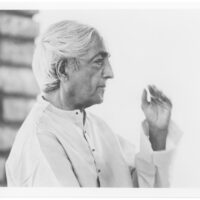Individuals are interwoven with the events of the outside world. How we want to deal with this is entirely up to us. This requires an inner perception. We have influence, even on the ideas themselves, and thus also on history.
I am often confronted with the claim that Steiner could not possibly have had an original spiritual experience: he would have drawn his wisdom from a broad wealth of handed down wisdom teachings. For the most part, traditional historians assume that there must always be role models on which thoughts ignite. Therefore, Steiner is often associated with the ideas of theosophy, especially with Helena Blavatsky’s, without clarifying the question of where she got them from.
But then, how does Goethe come to change the Faust character? Why does he redeem his Faust? The medieval Faust is taken by the devil at the end! Did Goethe get this idea from Renaissance occultism? One might hope to find relevant examples in his library. But how to explain his theory of colors? His theory of plant metamorphosis? There are no models for that.
Rudolf Steiner took up Goethe’s approach and developed it step by step. And what is original about it? Steiner methodically elaborates what Goethe took for granted: that the individual human being is interwoven with the individual phenomena as nature offers them to us. In other words, a person connects with a natural event as an inwardly involved observer, and through repeated immersion he or she trains this soul activity to become an instrument of cognition. Critics say: “That is absolutely not possible! The scientific process of cognition would completely fall prey to the subjective!” In one respect they are right: truth is not found in the subjective. But who says that the subject cannot objectify itself? In this question lies the crux of the matter.
Soul and Periphery
Everyday experience teaches that when I listen to another person, it is up to me whether I inwardly comment on and judge their statements while listening, or whether I simply listen quietly and withhold my comments so that I can truly understand what the other person wants to express. It’s up to me to decide whether or not to hold myself back. And what about seeing? Why do I have to identify and match what I see with what I have learned in my memory? Is it possible to educate myself to pure perception? On the one hand, what I see and perceive, I store and retrieve from memory when I need it. (The computer can do this better because it has a search engine that brings up what has been stored). On the other hand, I have to reckon with my thought processes. Can I let a sense perception work on me in an unbiased manner, unclouded by associations? For this I need an inner awareness that can concentrate on the effect of this perception. Only when I look at this effect on my soul can I let my thought formation be guided by the sense impression. Then I discover how, through this breathing between my soul and my surrounding, something begins to ‘speak’ through these sense perceptions. In this activity, every human being can only be original. For this I have to become inwardly active: getting to know myself, discovering and cultivating my soul potential as an emerging instrument of cognition and using it at the boundary between what is foreign to me and my own inner being. Steiner was able to do this to a high degree.
Books and role models can give me important hints, and I can learn a lot from experiences described by others, but they are like travel companions: they provide me with information that can be helpful when I am confronted with a certain situation on site—they are interesting, but they only become truly valuable when I myself have arrived at the place described.
Translation Charles Cross
Image Main entrance door to the Glashaus. Photo: Gottfried Fjeldså













